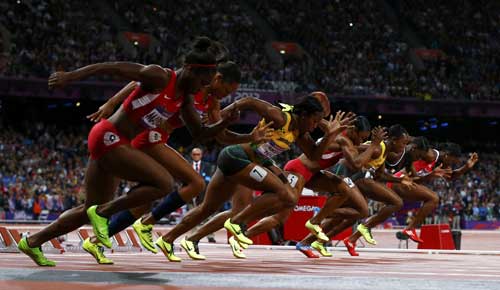Reaction time is the last dash point for skill-related components of physical fitness. It refers to the speed at which an athlete responds to an external stimulus. Reaction time relates directly to agility but is a smaller component of physical fitness.
Reaction time relates to performance because it is used frequently in various sporting scenarios. From the tennis player who has to react to their opponents serve, to the sprinter responding to the gun. Reaction time affects performance, and the better your reaction time, the better you will perform in certain situations (though as always this is limited).
For example, a football player who has a faster reaction time will be able to respond faster when his opponent tries to beat him. Another example is the cricket player reacting to an edge in cricket and making a good catch in the slips. Reaction time is used frequently in many different types of performances but is most predictive of performance in sprinting. A fast reaction time to the start gun or buzzer can make all the difference down the other end, especially if the race is close.
Otherwise, reaction time can only help to predict certain aspects of a performance, such as a volleyballer reacting to s spike, or a goalkeeper saving a shot. So while testing reaction time may be beneficial for some sports, or even players in specific positions in a sport, it will not always predict performance very well, unless it is specific to the sport/position and that is the only aspect of the performance you are trying to predict. E.g. predicting the time out of the block in a sprint, rather than the overall performance.
When thinking about movement efficiency, reaction time does not save energy or even help perfect technique. It can help to ensure an athlete’s performance is at its best, but it does not improve the efficiency of the performance. The only relation is that a faster reaction time in a 100 m sprint, for example, will mean the athlete is not playing catch up with his opponents.

